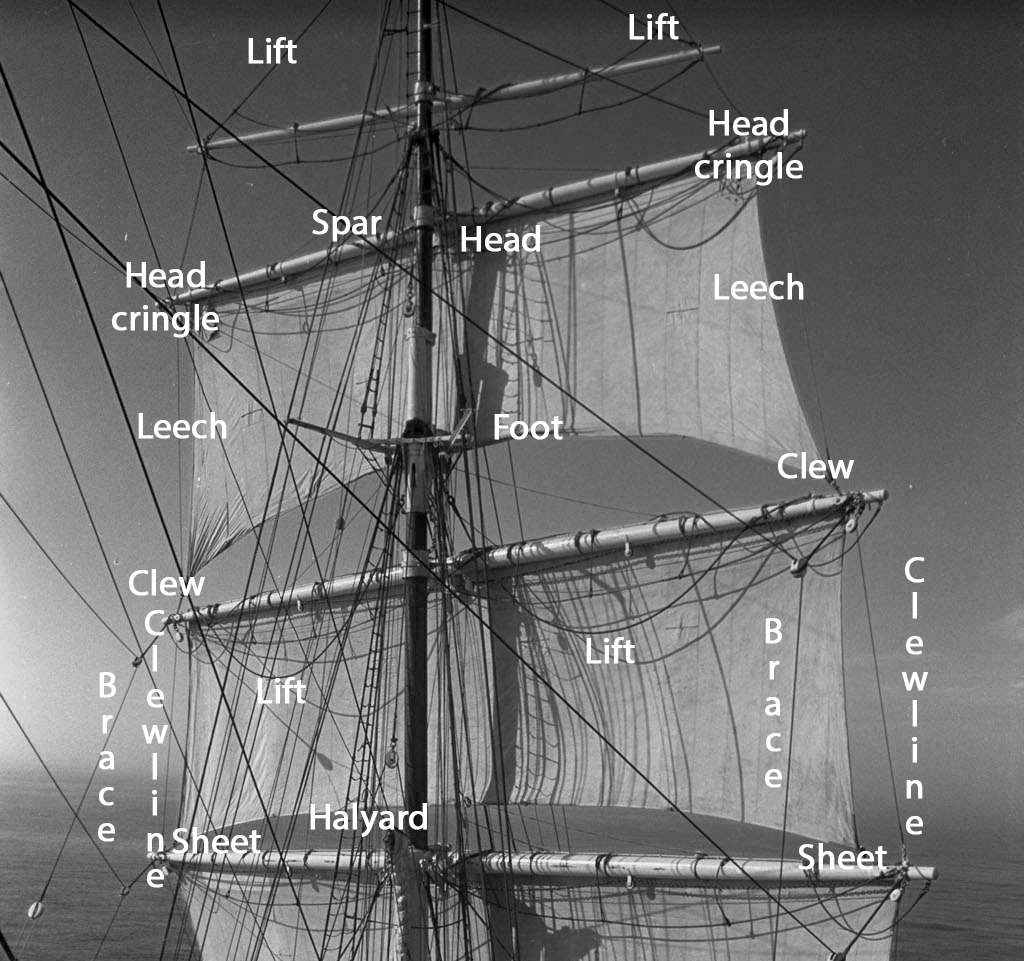|
Highland Border Ophiolite
The Highland Border Ophiolite (HBO) is a set of rocks that are ophiolitic in character found within the Highland Border Complex. They are exposed in a series of fault-bounded outcrops along the line of the Highland Boundary Fault that forms the southeastern boundary to the Grampian Highlands in Scotland. They represent fragments of a piece of oceanic crust or exhumed mantle that has been obducted onto continental crust. These rocks provide an important constraint on models of how the current geometry arose during the Caledonian Orogeny. Lithology The main lithologies found within the HBO are serpentinite, often in the form of ophicarbonate, with associated sedimentary rocks, including sandstone, limestone, chert and black mudstone (now black slate). The serpentinite is interpreted to be derived from exhumed mantle peridotites, altered to serpentinite at the seafloor. This is consistent with the presence of ophicarbonates that are associated with serpentinization in such an envi ... [...More Info...] [...Related Items...] OR: [Wikipedia] [Google] [Baidu] |
Ophiolite
An ophiolite is a section of Earth's oceanic crust and the underlying upper mantle (Earth), upper mantle that has been uplifted and exposed, and often emplaced onto continental crustal rocks. The Greek word ὄφις, ''ophis'' (''snake'') is found in the name of ophiolites, because of the superficial texture of some of them. Serpentinite especially evokes a snakeskin. (The suffix ''-lite'' is from the Greek ''lithos'', meaning "stone".) Some ophiolites have a green color. The origin of these rocks, present in many mountainous massifs, remained uncertain until the advent of plate tectonic theory. Their great significance relates to their occurrence within mountain belts such as the Alps and the Himalayas, where they document the existence of former ocean basins that have now been consumed by subduction. This insight was one of the founding pillars of plate tectonics, and ophiolites have always played a central role in plate tectonic theory and the interpretation of ancient mo ... [...More Info...] [...Related Items...] OR: [Wikipedia] [Google] [Baidu] |
Peridotite
Peridotite ( ) is a dense, coarse-grained igneous rock consisting mostly of the silicate minerals olivine and pyroxene. Peridotite is ultramafic, as the rock contains less than 45% silica. It is high in magnesium (Mg2+), reflecting the high proportions of magnesium-rich olivine, with appreciable iron. Peridotite is derived from Earth's mantle, either as solid blocks and fragments, or as crystals accumulated from magmas that formed in the mantle. The compositions of peridotites from these layered igneous complexes vary widely, reflecting the relative proportions of pyroxenes, chromite, plagioclase, and amphibole. Peridotite is the dominant rock of the upper part of Earth's mantle. The compositions of peridotite nodules found in certain basalts are of special interest along with diamond pipes ( kimberlite), because they provide samples of Earth's mantle brought up from depths ranging from about 30 km to 200 km or more. Some of the nodules preserve isotope ratio ... [...More Info...] [...Related Items...] OR: [Wikipedia] [Google] [Baidu] |
Clew Bay Complex
Sail components include the features that define a sail's shape and function, plus its constituent parts from which it is manufactured. A sail may be classified in a variety of ways, including by its orientation to the vessel (e.g. ''fore-and-aft'') and its shape, (e.g. ''(a)symmetrical'', ''triangular'', ''quadrilateral'', etc.). Sails are typically constructed out of flexible material that is shaped by various means, while in use, to offer an appropriate airfoil, according to the strength and apparent direction of the wind. A variety of features and fittings allow the sail to be attached to lines and spars. Whereas conventional sails form an airfoil with one layer of fabric, wingsails comprise a structure that has material on both sides to form an airfoil—much like a wing placed vertically on the vessel—and are beyond the scope of this article. Classifications Sails may be classified as either ''triangular'', which describes sails that either come to one point of suspens ... [...More Info...] [...Related Items...] OR: [Wikipedia] [Google] [Baidu] |
Metasediment
In geology, metasedimentary rock is a type of metamorphic rock. Such a rock was first formed through the deposition and solidification of sediment Sediment is a solid material that is transported to a new location where it is deposited. It occurs naturally and, through the processes of weathering and erosion, is broken down and subsequently sediment transport, transported by the action of .... Then, the rock was buried underneath subsequent rock and was subjected to high pressures and temperatures, causing the rock to recrystallize. The overall composition of a metasedimentary rock can be used to identify the original sedimentary rock, even where they have been subject to high-grade metamorphism and intense deformation. Types of metasedimentary rocks See also * References Metamorphic petrology {{Rock-stub ... [...More Info...] [...Related Items...] OR: [Wikipedia] [Google] [Baidu] |
Amphibolite
Amphibolite () is a metamorphic rock that contains amphibole, especially hornblende and actinolite, as well as plagioclase feldspar, but with little or no quartz. It is typically dark-colored and dense, with a weakly foliated or schistose (flaky) structure. The small flakes of black and white in the rock often give it a salt-and-pepper appearance. Amphibolite frequently forms by metamorphism of mafic igneous rocks, such as basalt. However, because metamorphism creates minerals entirely based upon the chemistry of the protolith, certain 'dirty marls' and volcanic sediments may also metamorphose to an amphibolite assemblage. Deposits containing dolomite and siderite also readily yield amphibolite ( tremolite-schist, grunerite-schist, and others) especially where there has been a certain amount of contact metamorphism by adjacent granitic masses. Metamorphosed basalt (metabasalt) creates ''ortho-amphibolite'' and other chemically appropriate lithologies create ''par ... [...More Info...] [...Related Items...] OR: [Wikipedia] [Google] [Baidu] |
Deerpark Complex
Deer Park or Deerpark may refer to: * Deer park (England), parkland originally used by the nobility for hunting deer. Places Australia * Deer Park, Victoria, a suburb of Melbourne, located within the City of Brimbank ** Deer Park railway station Canada * Deer Park, Toronto, Ontario, a neighborhood France * Parc-aux-Cerfs (English: Deer Park), a house at Versailles India * Sarnath, Uttar Pradesh, a deer park which was legendary site of the Buddha's first sermon * Deer Park (Delhi), in the South Delhi locality of Hauz Khas Ireland * Deerpark, County Cavan, a townland in County Cavan United Kingdom * Deer Park, County Antrim, a townland in County Antrim, Northern Ireland * Deer Park, County Fermanagh, a townland in County Fermanagh, Northern Ireland * Deer Park, County Londonderry, a townland in County Londonderry, Northern Ireland * Deer Park, County Tyrone, a townland in County Tyrone, Northern Ireland United States * Deer Park, Alabama * Deer Park ... [...More Info...] [...Related Items...] OR: [Wikipedia] [Google] [Baidu] |
Conodont
Conodonts, are an extinct group of marine jawless vertebrates belonging to the class Conodonta (from Ancient Greek κῶνος (''kōnos''), meaning " cone", and ὀδούς (''odoús''), meaning "tooth"). They are primarily known from their hard, mineralised tooth-like structures called "conodont elements" that in life were present in the oral cavity and used to process food. Rare soft tissue remains suggest that they had elongate eel-like bodies with large eyes. Conodonts were a long-lasting group with over 300 million years of existence from the Cambrian (over 500 million years ago) to the beginning of the Jurassic (around 200 million years ago). Conodont elements are highly distinctive to particular species and are widely used in biostratigraphy as indicative of particular periods of geological time. Discovery and understanding of conodonts The teeth-like fossils of the conodont were first discovered by Heinz Christian Pander and the results published in Saint Petersburg, ... [...More Info...] [...Related Items...] OR: [Wikipedia] [Google] [Baidu] |
Trilobite
Trilobites (; meaning "three-lobed entities") are extinction, extinct marine arthropods that form the class (biology), class Trilobita. One of the earliest groups of arthropods to appear in the fossil record, trilobites were among the most successful of all early animals, existing in oceans for almost 270million years, with over 22,000 species having been described. Because trilobites had wide diversity and an easily fossilized mineralised exoskeleton made of calcite, they left an extensive fossil record. The study of their fossils has facilitated important contributions to biostratigraphy, paleontology, evolution, evolutionary biology, and plate tectonics. Trilobites are placed within the clade Artiopoda, which includes many organisms that are morphologically similar to trilobites, but are largely unmineralised. The relationship of Artiopoda to other arthropods is uncertain. Trilobites evolved into many ecological niches; some moved over the seabed as predators, scavengers, or ... [...More Info...] [...Related Items...] OR: [Wikipedia] [Google] [Baidu] |
Lower Ordovician
The Early Ordovician is the first epoch of the Ordovician period, corresponding to the Lower Ordovician series of the Ordovician system. It began after the Age 10 of the Furongian epoch of the Cambrian and lasted from to million years ago, until the Dapingian age of the Middle Ordovician. It includes Tremadocian and Floian ages. History International Commission on Stratigraphy (ICS) appointed working groups on the boundaries of the Ordovician subdivisions in 1974. The boundaries were established by the fauna of conodonts and/or graptolites. In 1995, the Subcommission on Ordovician Stratigraphy, with the support of 90% majority of voting members, adopted the division of the Ordovician system into three series: Lower, Middle and Upper. In the same year, it was decided to divide each of the three series into two global stages. ''Tetragraptus approximatus'' zone was chosen as the base of the upper stage of the Lower Ordovician by 95% of the votes. Before the adoption of the in ... [...More Info...] [...Related Items...] OR: [Wikipedia] [Google] [Baidu] |
Lower Cambrian
The Cambrian ( ) is the first geological period of the Paleozoic Era, and the Phanerozoic Eon. The Cambrian lasted 51.95 million years from the end of the preceding Ediacaran period 538.8 Ma (million years ago) to the beginning of the Ordovician Period 486.85 Ma. Most of the continents lay in the southern hemisphere surrounded by the vast Panthalassa Ocean. The assembly of Gondwana during the Ediacaran and early Cambrian led to the development of new convergent plate boundaries and continental-margin arc magmatism along its margins that helped drive up global temperatures. Laurentia lay across the equator, separated from Gondwana by the opening Iapetus Ocean. The Cambrian marked a profound change in life on Earth; prior to the Period, the majority of living organisms were small, unicellular and poorly preserved. Complex, multicellular organisms gradually became more common during the Ediacaran, but it was not until the Cambrian that fossil diversity seems to rapidly incre ... [...More Info...] [...Related Items...] OR: [Wikipedia] [Google] [Baidu] |
British Geological Survey
The British Geological Survey (BGS) is a partly publicly funded body which aims to advance Earth science, geoscientific knowledge of the United Kingdom landmass and its continental shelf by means of systematic surveying, monitoring and research. The BGS headquarters are in Keyworth, Nottinghamshire, England. Its other centres are located in Edinburgh, Wallingford, Oxfordshire, Wallingford, Cardiff and London. The current tagline of the BGS is: ''Understanding our Earth''. History and previous names The Geological Survey was founded in 1835 by the Board of Ordnance as the Geological Survey of Great Britain, under Directors of the British Geological Survey, directorship of Henry De la Beche. This was the world's first national Geological Survey, geological survey. It remained a branch of the Ordnance Survey for many years. In 1965, it was merged with the Geological Museum and Overseas Geological Surveys, under the name of Institute of Geological Sciences. In 1969, Beris Cox was ... [...More Info...] [...Related Items...] OR: [Wikipedia] [Google] [Baidu] |







